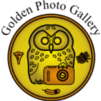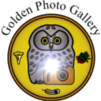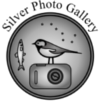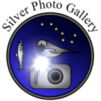The frequency of updating my blog decreases constantly π There are two main reasons for this: 1) I have finally made a functional prototype of a device which commercial value feels limitless, at least I really hope so. But I don’t say this because of my attraction to my own creation, I have let go multiple of my previous inventions which were, well, not good. Few patent attorneys have already seen the new device, one of them said “this is the best customer case for a while!”. After patenting, I might disclose the device here, but let’s see π The developmental work has taken a lot of time resources. 2) Although I love the possibilities the CHDK enables in low-cost photographing, I’m afraid of capturing awesome scenes as technically poor photos. Especially in low-light conditions, the amount of noise my cameras produce is so large that the digital noise compensation might make the images look plastic, why I lost many good scenes. Thus, I have lately concentrated more on experiencing nature rather than acquiring, editing, and posting hundreds of photos all the time. That is why I haven’t much carried my cameras with me, but took only a few photos now and then with my cellphone. Though, I do have a pretty neat video project under process currently, and if you wait patiently I shall show you some breathtaking wildlife scenes soon π I have planned to buy a new camera, but haven’t found any suitable model from the markets. If I will pay a lot of money, the camera needs to have exactly the features I’m looking for, but no luck so far (and not much money anyhow).
Btw, this is the 2/3 week of my summer holiday I took from day work. Thus, I decided to celebrate the holiday by posting some summer photos from my cellphone, here we go!

This is not the device I talked about, but pretty handy item anyhow. I made my own wheel hoe to make our own vegetable field! At first the job was incredibly hard as the soil was bound by the roots of the lawn. However, once the initial soil is broken, one can almost run through the field with the hoe π The different types of heads can be changed and tuned to appropriate level under the wheels, and the angle of the main shaft is also adjustable. I’m interested in permaculture, as the nowadays way of life is way too complex and harmful to nature, our cradle of life. I want to get my hands into dirt and at least remotely try to live like my ancestors did, + everything is so super interesting π

Our own vegetable field π In the three closest rows there are potatoes under “leaf hills”. Next there is some broad beans, and then Finnish Slash-and-burn turnips (an awful direct translation into English, sorry). The various onions were buried under the weed despite our help π Next year, I think we will focus on plants that have large seeds, like beans and potatoes, so that they have better reservoirs to start growing than weeds. To avoid spreading plant pathogens too much, we will till always parallel to the rows. Then we will change the places of the plants each year, so that the pathogens left behind will starve without hosts, hopefully. We also have nice wild plants in our estate. The white flowers in the left side are goatweed, a celery like plant I like to eat with chili sauce and chicken. I have already eaten a lot of small but so sweet woodland strawberries, and in our backyard we have some blue berries and lingonberries π We also have a small but productive lovage, an incredibly good herb with red meat! Likely brought here by the earlier residents though. I’ll talk about the back-left “cottage” soon.

And of course I got some tilling aid from forest, freaking wild boars! This photo was taken by my trail camera. The boar is playing with the raccoon dog trap. Oh boy how many slugs I have shot recently, but my shotgun is not enough accurate for boar hunting. I think the stock cast in my shotgun throws the slugs awfully far up-right, it is hard to aim if the point of impact deviates far from the line of the barrel. Let’s see how often the boars will visit, do I need to buy a new shotgun! Although, once the boars came as close as within 20 meters from me, need to be careful here in the forest π

I designed a simple surge protector circuit for my trail camera to protect it from the thunder storms. The low-voltage DC wire goes into the open tube turned upside down. Condensed water can leak away through the bottom opening, while rain and snow cannot enter from the sealed top. There are two parallel self-healing HV film caps between the Vcc and GND lines together with the PWR-LED-resistor circuit and 600Wmax@1ms 10V TVS diode. And if lightning will elevate the potential in the wires high relative to the physical ground, in the tube there is also a piece of copper wire close to the open GND and Vcc lines. The other end of the copper wire is connected directly to the real earth via soldered nail. Thus, if there is high potential in the wires against real earth, a spark will deliver most of the power directly to the ground.

Here is the “cottage”, which is actually a compost pit based outdoor toilet! I made it from leftover wood we had, why the costs to make it were minimal. The window frames are also from the old windows of my workshop. The ground in our field is awfully hard, rich in clay. Thus, the plants have difficulties to grow their roots, and all the nutrients are flushed away with rain. That is why we need some “stuff” to fertilize the soil in the future, in addition to charcoal. With the toilet we can also increase the usage age of our water filtration bed that purifies the wastes coming inside the house. I didn’t want to play with buckets full of sh** and pee, why I decided to dug a compost pit and lay the toilet above it directly. In the pit we can also dump our kitchen waste so that the material does not freeze during winter and the mixing will hopefully also keep bears away (later, veggie waste is needed for the coming chicken coop though). After two to three years of intensive composting with appropriate N:C ratios, good oxygen supply and heat, the compost should be free of possible pathogens. As the dirty matter doesn’t have contact to hosts for long time, and the composting microbes will do their job, the maturated material should be good stuff to use directly in the field π Oh, the toilet separates urine as you can see. During early season we used 1:10 diluted urine directly on the field, but nowadays we circle the field with the 100% urine to keep hares and boars away. After using the undiluted version we haven’t seen the pigs anymore, although the smell is awful for a while in human noses also π

An inside view of the outdoor compost pit toilet. A nice place to meditate with hunting and fishing magazines! Notice the vertical tube in the back that drafts the awful warm air to above while the structurally open roof ventilates the smells away into the wind. In the right-hand side there is the small loop of red rope. By pulling it and attaching to a screw, the plastic-foam cover can be lifted up to expose the compost pit. The cover will keep the compost warm during the winter and also block at least some of the animals going into the pit.

Here is a photo from the pit before lifting the toilet on it. Notice the vertical, roofed tube having few side holes. It will deliver oxygen even into the lowest parts of the coming compost bed to make the composting efficient. I made it from PP sewer tube, and casted a concrete rim on the lower part to support the tube. Notice also the non-capillary rubber sheets on the concrete bases laid in the ground for the wooden legs of the toilet. Oh, and to secure the big bucket in the hole I used cat litter made of bentonite, the grayish stuff around the bucket. When moist, the bentonite will expand and form a pretty tight grip on the bucket so that the possibly leaking water into the pit does not cause any buoyancy problems. I pre wetted the bentonite and the grip was strong!

It is nice to take a dump while a moose is rocking behind the toilet π

Here are our two closest neighbors, a couple of beautifully shining slow worms π Protect your lairs my friends, we do not want any snakes in our yard.

A rainbow trout I caught from the chatting streams behind me π

Honestly, the trouts tasted a little clayish, likely due to the hot weather. Never had similar problems though, but I usually lure my trouts during winter.
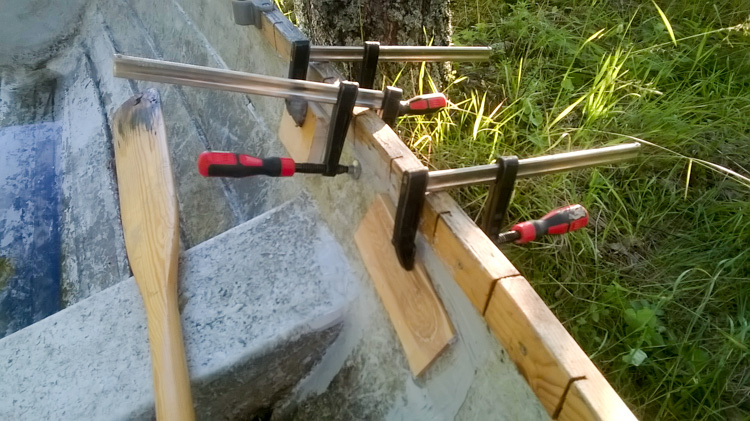
I again reinforced the edges of my boat, and off we go!

One of the nice zanders I caught π The meat is so tender after frying in butter, and no taste of mud!

My nephew got the middle zander. The lowest lure is the Rapala tail dancer shallow runner, my favorite zander lure! Above is my new favorite, Rapala husky with the scatter feature, a lure designed by Finnish zander trollers! π The scattering feature is amazing, the lure swims so lively! No wonder the zanders cannot resist it.

Om nom nom.

With my girlfriend (nowadays my lovely wife π ) we made a few vihta for sauna. The main bodies are made of silver birches, while some twigs of downy birches were used to give some aroma.

Baby neighbors in the attic of my workshop :>

This is my last project so far, small camp under our great rowan! A nice place to spent calm evenings, wonder the surrounding nature and fry some sausages π That’s all today folks, see you next time!


